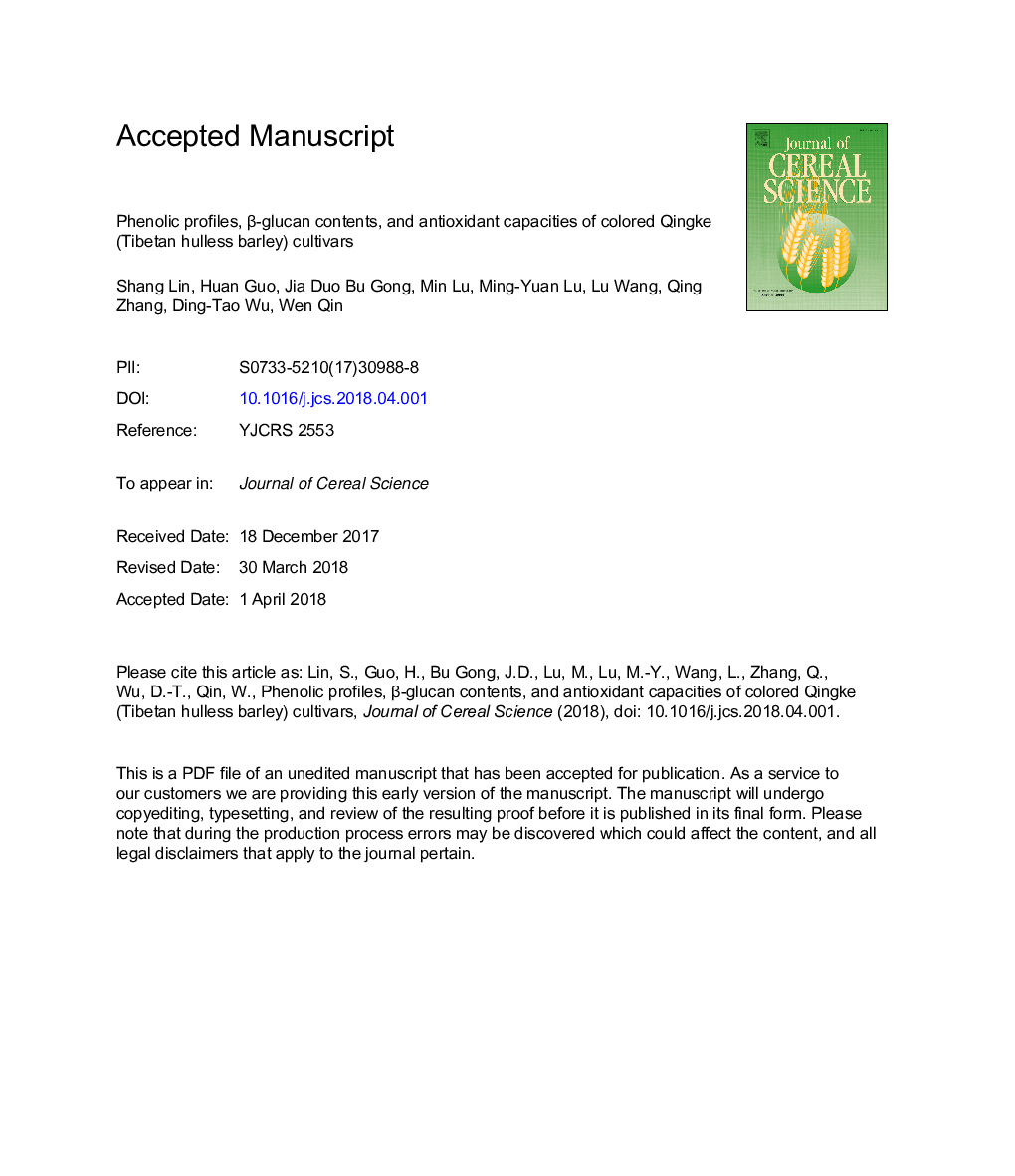| Article ID | Journal | Published Year | Pages | File Type |
|---|---|---|---|---|
| 8881343 | Journal of Cereal Science | 2018 | 33 Pages |
Abstract
In order to explore colored Qingke as functional food ingredients, bioactive components (phenolic compounds and β-glucans) and their antioxidant capacities (DPPH radical scavenging capacity, ABTS radical cation scavenging capacity, and reducing power) of colored (black, blue, and white) Qingke cultivars were determined and compared. Results showed that the highest average contents of total phenolics (4.37â¯Â±â¯0.04â¯mg GAE/g DW, nâ¯=â¯3), total flavonoids (2.86â¯Â±â¯0.11â¯mg RE/g DW, nâ¯=â¯3), total proanthocyanidins (2.54â¯Â±â¯0.08â¯mg CE/g DW, nâ¯=â¯3), total anthocyanins (9.55â¯Â±â¯0.28â¯mg cyanidin-3-glucose/100â¯g DW, nâ¯=â¯3), and total β-glucans (6.29â¯Â±â¯0.02%, nâ¯=â¯3), as well as the highest average level of antioxidant capacities were observed in the black Qingke cultivar, followed by lower blue Qingke cultivar, and the lowest white Qingke cultivar. And besides, the highly positive correlations between antioxidant capacities and free phenolic compounds indicated that the phenolic compounds were the main contributors to the antioxidant activity of Qingke. Results showed that the colored Qingke was potential sources of phenolic compounds, β-glucans, and antioxidants, which suggested that the colored Qingke could be explored further as functional food ingredients for industrial applications.
Keywords
Related Topics
Life Sciences
Agricultural and Biological Sciences
Agronomy and Crop Science
Authors
Shang Lin, Huan Guo, Jia Duo Bu Gong, Min Lu, Ming-Yuan Lu, Lu Wang, Qing Zhang, Wen Qin, Ding-Tao Wu,
